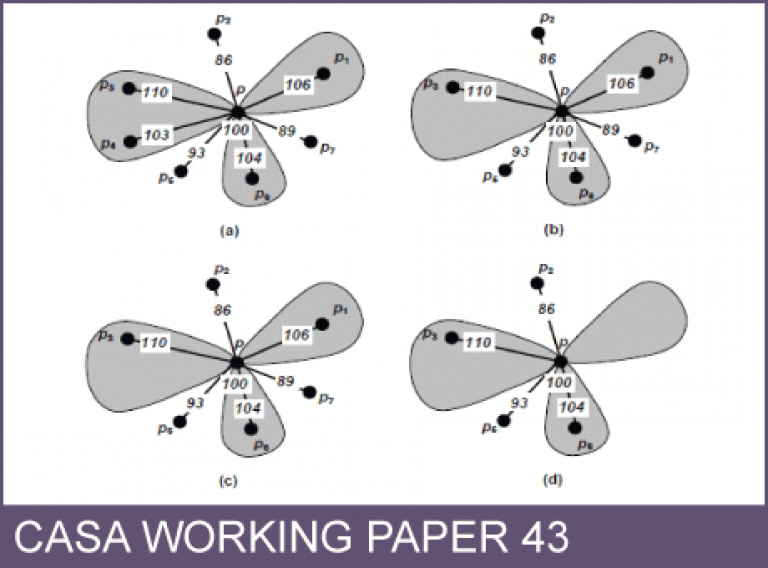CASA Working Paper 43

1 February 2002
Surface Networks
The desire to understand and exploit the structure of continuous surfaces is common to researchers in a range of disciplines. Few examples of the varied surfaces forming an integral part of modern subjects include terrain, population density, surface atmospheric pressure, physicochemical surfaces, computer graphics, and metrological surfaces.
The focus of the work here is a group of data structures called Surface Networks, which abstract 2-dimensional surfaces by storing only the most important (also called fundamental, critical or surface-specific) points and lines in the surfaces. Surface networks are intelligent and 'natural' data structures because they store a surface as a framework of 'surface' elements unlike the DEM or TIN data structures. This report presents an overview of the previous works and the ideas being developed by the authors of this report. The research on surface networks has four main focus areas namely, data structure model, automated extraction, generalisation, and applications. The report is also organised into these research themes.
Despite their immense analytical potential, there have been a number of limitations to date, which need to be tackled:
- Due to their design requirements, current implementations of Surface networks have been restricted to surfaces with fluvial features (i.e., must have ridges, channels, peaks, passes, and pits). However, a number of surfaces have biased topography such as in glaciated or karstic terrains or features may be absent e.g., flat surfaces.
- The feature detection methods are scale dependent. In other words, in any one run, our computing routines detect features that fit into the fixed search window (kernel etc.). An incorrect feature detection method causes loss of the topological properties, essential for the construction of a consistent surface network.
- Although the topological generalisation of surface networks is well understood, there has been no proposal on the regeneration of the topographical details in the generalised area of the surface networks.
- Surface networks are 'believed' to be useful for the visualisation of complex surfaces, optimising visibility and accessibility routines and performing landscape evolution. However, like any other abstraction of surfaces, surface networks also carry a level of uncertainty.
This report describes the results of the research carried out by the reports' authors on the following issues:
- Surface network model: A comprehensive review of the surface network model was done, which revealed some acute limitations of the surface network data model. It was observed that the surface network data model requires significant development to take into account the varied surface forms and the scale issues of terrain data structures.
- Automated extraction: A survey of the algorithms for the automated extraction of surface network revealed that none of the automated extraction methods could extract both a topologically-consistent and complete (taking into account scaleissues) surface network.
- Generalisation: The study of the research on the generalisation of surface networks revealed that the potential of the generalisation is hardly addressed. This work has proposed some alternative methods for the generalisation of surface networks.
- Applications: A survey of the applications of surface network data structure revealed its use in the computer science field mainly for visualisation. This work proposes the use of surface network for optimising viewshed computation and surface evolution studies.
This working paper is available as a PDF. The file size is 2MB.
Authors: Sanjay Rana, Jeremy Morley
Publication Date: 1/2/2002
 Close
Close

